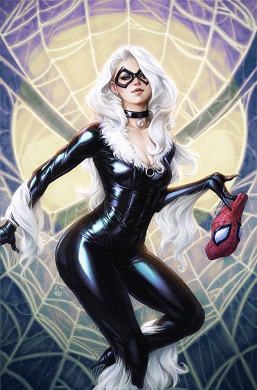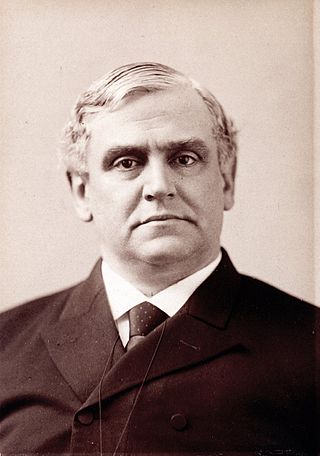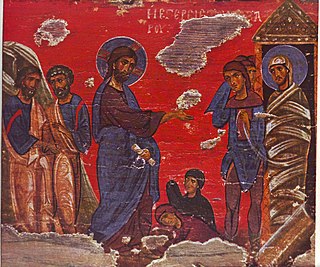
Irenaeus was a Greek bishop noted for his role in guiding and expanding Christian communities in the southern regions of present-day France and, more widely, for the development of Christian theology by combating heterodox or Gnostic interpretations of Scripture as heresy and defining proto-orthodoxy. Originating from Smyrna, he had seen and heard the preaching of Polycarp, who in turn was said to have heard John the Evangelist, and thus was the last-known living connection with the Apostles.

Polycarp was a Christian bishop of Smyrna. According to the Martyrdom of Polycarp, he died a martyr, bound and burned at the stake, then stabbed when the fire failed to consume his body. Polycarp is regarded as a saint and Church Father in the Catholic, Eastern Orthodox, Oriental Orthodox, Anglican, and Lutheran churches.

Sense and Sensibility is the first novel by the English author Jane Austen, published in 1811. It was published anonymously; By A Lady appears on the title page where the author's name might have been. It tells the story of the Dashwood sisters, Elinor and Marianne as they come of age. They have an older half-brother, John, and a younger sister, Margaret.

The phrase "What would Jesus do?", often abbreviated to WWJD, became popular particularly in the United States in the early 1900s after the widely read book In His Steps: What Would Jesus Do? by Charles Sheldon. The phrase had a resurgence in the 1990s as a personal motto for adherents of Christianity, who used it as a reminder of their belief in a moral imperative to act in a manner demonstrating the love of Jesus through their actions. The resurgence of the motto during the 1990s stems from the W.W.J.D. abbreviation on wristbands that became popular among Christian youth groups.

Warren Steed Jeffs is an American religious-cult leader and felon, convicted of several sex crimes and two assisted sex crimes involving children. He is the president of the Fundamentalist Church of Jesus Christ of Latter-Day Saints, a polygamous movement. In 2011, he was convicted of two felony counts of child sexual assault, for which he is serving a life sentence.

Black Cat is a character appearing in American comic books published by Marvel Comics. Created by Marv Wolfman, Keith Pollard, and Dave Cockrum, the character first appeared in The Amazing Spider-Man #194. Felicia Hardy is the daughter of Walter Hardy, a world-renowned cat burglar. After suffering from a traumatic assault by an ex-boyfriend as a college freshman, she trained herself in various fighting styles and acrobatics and, after deciding to follow in her father's footsteps, adopted the costumed identity of the Black Cat. She has the subconscious ability to affect probability fields, producing "bad luck" for her enemies. Throughout her history, Black Cat has sometimes been an enemy, love interest, and an ally of the superhero Spider-Man.

Phillips Brooks was an American Episcopal clergyman and author, long the Rector of Boston's Trinity Church and briefly Bishop of Massachusetts. He wrote the lyrics of the Christmas hymn, "O Little Town of Bethlehem".

Charles Monroe Sheldon was an American Congregationalist minister and a leader of the Social Gospel movement. His novel In His Steps introduced the principle "What would Jesus do?", which articulated an approach to Christian theology that became popular at the turn of the 20th century and enjoyed a revival almost one hundred years later. The stretch of US-24 on the north side of Topeka, Kansas, between US-75 and K-4 is named the "Charles Sheldon Trafficway" in his honor.

Henry Byron Warner was an English film and theatre actor. He was popular during the silent era and played Jesus Christ in The King of Kings. In later years, he successfully moved into supporting roles and appeared in numerous films directed by Frank Capra. Warner's most recognizable role to modern audiences is Mr. Gower in It's a Wonderful Life, directed by Capra. He appeared in the original 1937 version of Lost Horizon as Chang, for which he was nominated for the Academy Award for Best Supporting Actor.

The primacy of Peter, also known as Petrine primacy, is the position of preeminence that is attributed to Peter among the Twelve Apostles.

Spider-Man/Black Cat: The Evil That Men Do is a six-issue comic book limited series published by Marvel Comics starring the superhero Spider-Man and the Black Cat. The series was written by Kevin Smith and drawn by Terry Dodson and his wife Rachel. The series was notorious for its delays, with a three-year gap between the publication of the second and third issues, and has received criticism for its shift in tone following the hiatus.

Lazarus of Bethany, also venerated as Righteous Lazarus, the Four-Days Dead in the Eastern Orthodox Church, is the subject of a sign of Jesus in the Gospel of John, in which Jesus restores him to life four days after his death. The Eastern Orthodox and Catholic traditions offer varying accounts of the later events of his life.

Colorado Territory is a 1949 American Western film noir directed by Raoul Walsh and starring Joel McCrea, Virginia Mayo, and Dorothy Malone. Written by Edmund H. North and John Twist, and based on the novel High Sierra by W.R. Burnett, the film is about an outlaw who is sprung from jail to help pull one last railroad job.
Photinus was a Christian bishop of Sirmium in Pannonia Secunda, best known for denying the incarnation of Christ, thus being considered a heresiarch by both the Catholic and Orthodox Churches. His name became synonymous in later literature for someone asserting that Christ was not God. His teachings are mentioned by various ancient authors, like Ambrosiaster (Pseudo-Ambrose), Hilary of Poitiers, Socrates Scholasticus, Sozomen, Ambrose of Milan, Augustine of Hippo, John Cassian, Sulpicius Severus, Jerome, Vigilius of Thapsus and many others.

John Eleazer Remsburg was an ardent religious skeptic in America in the late 19th and early 20th centuries. In his book 1909 book The Christ, Remsburg lists forty-two ancient writers who did not mention Jesus or whose mentions are suspect, and this list has appeared in many subsequent books that question the historicity of Jesus. Remsburg himself wrote that the man Jesus may have existed, but that the Christ of the gospels is mythical.
Arthur Graham Crowder Maxwell, often abbreviated as A. Graham Maxwell, was a Seventh-day Adventist theologian, and the emeritus professor of New Testament studies at Loma Linda University. In a 1985 survey of 55 religion teachers at North American Adventist colleges, Maxwell tied for fourth place among most influential Adventist authors.

Lorin Farr was a Mormon pioneer and the first mayor of Ogden, Utah.
Dr. Sheldon Wallace is a fictional character in the ABC drama Private Practice, a spin-off of Grey's Anatomy. He is portrayed by Brian Benben.
Henry Maxwell may refer to:















